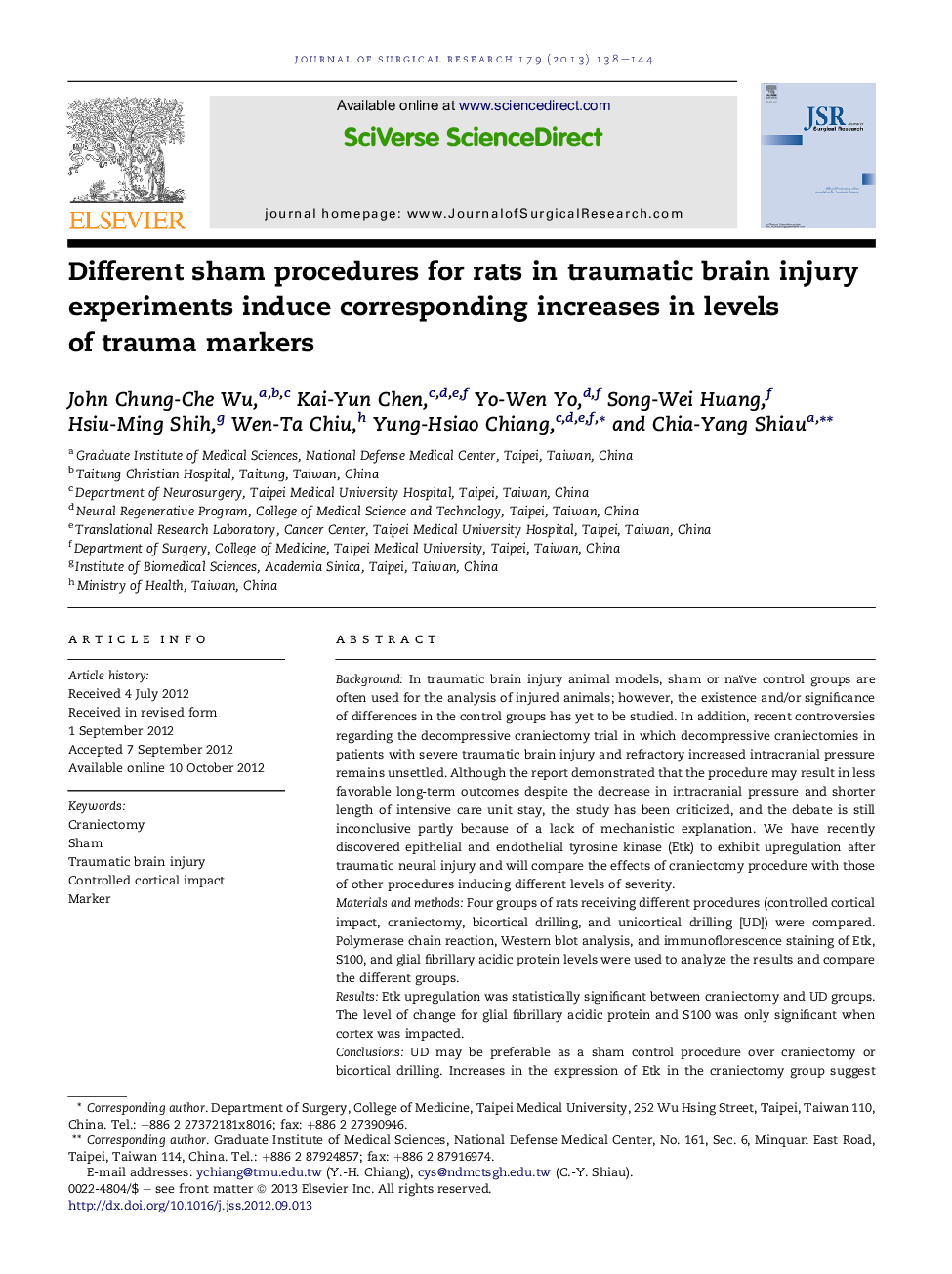| کد مقاله | کد نشریه | سال انتشار | مقاله انگلیسی | نسخه تمام متن |
|---|---|---|---|---|
| 4301131 | 1288432 | 2013 | 7 صفحه PDF | دانلود رایگان |

BackgroundIn traumatic brain injury animal models, sham or naïve control groups are often used for the analysis of injured animals; however, the existence and/or significance of differences in the control groups has yet to be studied. In addition, recent controversies regarding the decompressive craniectomy trial in which decompressive craniectomies in patients with severe traumatic brain injury and refractory increased intracranial pressure remains unsettled. Although the report demonstrated that the procedure may result in less favorable long-term outcomes despite the decrease in intracranial pressure and shorter length of intensive care unit stay, the study has been criticized, and the debate is still inconclusive partly because of a lack of mechanistic explanation. We have recently discovered epithelial and endothelial tyrosine kinase (Etk) to exhibit upregulation after traumatic neural injury and will compare the effects of craniectomy procedure with those of other procedures inducing different levels of severity.Materials and methodsFour groups of rats receiving different procedures (controlled cortical impact, craniectomy, bicortical drilling, and unicortical drilling [UD]) were compared. Polymerase chain reaction, Western blot analysis, and immunoflorescence staining of Etk, S100, and glial fibrillary acidic protein levels were used to analyze the results and compare the different groups.ResultsEtk upregulation was statistically significant between craniectomy and UD groups. The level of change for glial fibrillary acidic protein and S100 was only significant when cortex was impacted.ConclusionsUD may be preferable as a sham control procedure over craniectomy or bicortical drilling. Increases in the expression of Etk in the craniectomy group suggest a possible mechanism by which unfavorable outcome occurs in patients receiving craniectomy procedures.
Journal: Journal of Surgical Research - Volume 179, Issue 1, January 2013, Pages 138–144